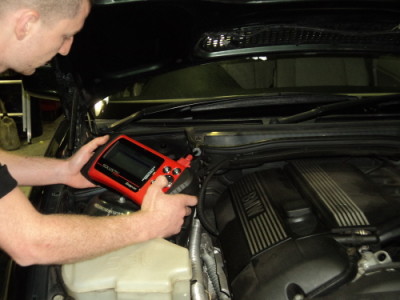Diagnostic Inspections
All modern vehicle engines are controlled by a computer or ECM (Engine Control Module). This ensures the engine and transmission run efficiently and exhaust emissions are kept within the permitted ranges.
Emission regulations together with soaring fuel costs, make it vital to run as efficiently as possible. Engine settings need to be continually monitored and adjusted to account for many variables including temperature, speed, altitude and road surface.
That is why modern vehicles contain so many more electronic components than the vehicles of yesteryear. No human driver would be able to make the instantaneous setting changes, required for the vehicle to run at optimum efficiency. Instead, there are a variety of sensors which send signals to the ECM. The ECM monitors these signals and makes adjustments to dozens of parameters such as ignition timing and fuel injection settings.
There are two oxygen sensors fitted to the exhaust system. The primary sensor is fitted before the catalytic convertor, and the secondary sensor is fitted after it. The primary sensor measures the cylinder combustion efficiency. The signals are fed back to the ECM which then makes adjustments to the fuel/air mixture to keep emissions low. The secondary sensor measures the efficiency of the catalytic converter.
If the ECM detects any sensor signal outwith normal values, it records a fault code or DTC (Diagnostic Trouble Code) in its memory, and switches on the MIL (Malfunction Indicator Lamp).
The fault code has to be retrieved by plugging a scanning tool into the OBD (on-board diagnostic) socket.

